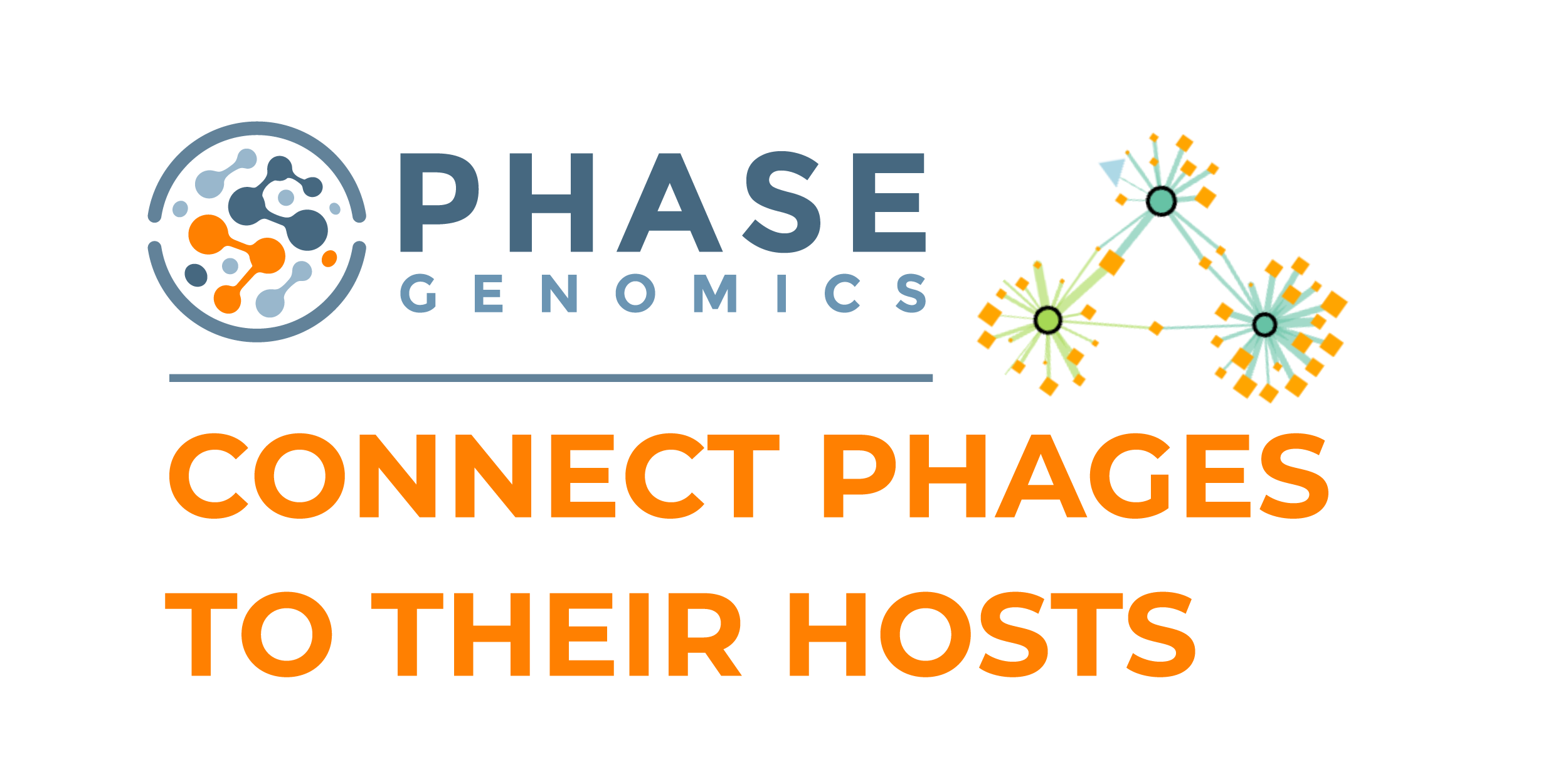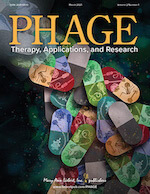ASM Microbe 2019 was held at the Moscone Conference Centre in downtown San Francisco from Wednesday June 20th to Monday June 25th. With more than 8,000 attendees, it is perhaps the largest annual gathering of microbiologists worldwide, and it was certainly the largest conference I had ever attended. The program consisted of early morning and late afternoon sessions, with most of the middle of each day reserved for viewing the more than 1,000 posters within the enormous 181,400 sq ft exhibition hall.
ASM Division M—the bacteriophage division
Division M, the bacteriophage division of the American Society of Microbiology, held its annual business meeting and awards ceremony on Friday evening, and Jerry Koudelka (University of Buffalo) who has led Division M for a number of years, handed over the leadership to Jason Gill (Texas A&M). Each year Division M awards travel grants to students and postdocs presenting phage research as ASM Microbe, and this year four grants were awarded.
Four Travel Award Winners
I was lucky enough to win the Roche Travel Award for Phage Genomics for my abstract on a new family of phage-resistance proteins in Gram negative bacteria that I identified during my PhD.
Amelia McKitterick from UC Berkley was awarded the NEB Gisela Mosig Award for her abstract on a phage-encoded helicase involved in the mobilisation of an anti-phage island in V. cholerae.
Texas A&M undergraduate student Ashley Holt won the Roche Award for Best Phage Abstract for her work identifying a new class of lysis proteins which enable explosive lysis of E. coli by PhiKT.
And finally, Gunaraj Dhungana (Tribhuvan University, Nepal) won the Intralytix Travel Award for his abstract on the pharmacological characterization of an Acinetobacter phage in a murine infection model.
Amelia, Ashley and I all gave short talks on our work before receiving our awards. For all phage enthusiasts attending future ASM Microbe meetings, I highly recommend joining Division M and looking out for the Division M business meeting in the conference program (which includes a rather exclusive food and drinks reception!). More information about Division M, including how to join if you are already an ASM member, can be found on their Facebook page or their newly created Twitter page.
Phage sessions at Microbe 2019
Along with broad-ranging microbial sessions, including keynote lectures by the newly minted Nobel laureate Frances Arnold, and Impossible Foods CEO Pat Brown, the main ASM Microbe program featured a number of phage-focused symposia. Sunday started out with “When Bacteria Meet their Pathogen: Bacteriophage Defense in the Era of CRISPR” organized by Kim Seed (UC Berkley) and Joe Bondy-Denomy (UC San Francisco).
Bacteriophage Defense in the Era of CRISPR
Joe kicked off the symposium with a fantastic talk summarizing his group’s work on the nucleus-like compartment that is formed by the jumbo Pseudomonas phage ΦKZ to escape bacterial anti-phage defenses like CRISPR-Cas and restriction endonucleases.
Simon Roux (Department of Energy, Joint Genome Institute) showed that the known diversity of inoviruses is vastly under-represented by characterized isolates, and in fact inovirus-like elements can be detected in almost all bacteria phyla, and even in several Archaea.
Asma Hatoum-Aslan (University of Alabama) presented insights from her group’s work untangling the molecular mechanisms of type III CRISPR-Cas systems, suggesting that non-Cas, core-genome encoded nucleases are recruited for production of mature crRNAs in Staphylococci.
Vivek Mutalik (Berkley National Labs) presented a high-throughput discovery pipeline for genomic determinants of phage resistance and sensitivity, which could allow high-throughput receptor determination for as little as $10 per phage.
Perhaps the highlight of the session, and a personal highlight of the conference for me, was Rotem Sorek’s (Weizmann Institute of Science, Israel) talk on the discovery of novel phage defense islands in bacteria, including systems that parallel eukaryotic anti-viral mechanisms, perhaps suggesting aspects of the eukaryotic innate immune system could have evolved from bacterial phage defense systems.
A Phage-ful Sunday Evening Meetup
On Sunday evening the phage community assembled at a local bar, thanks to Twitter-fuelled organisation led by Bondy-Denomy lab graduate student Adair Borges. Around 50 phage fans attended the meetup, and it was fantastic to meet phage researchers from across the US and beyond, particularly in light of some unfortunate scheduling conflicts of phage talks at this year’s conference. I hope that a phage meetup (perhaps coordinated by a local phage lab) will become a regular part of the ASM Microbe meeting, and Catherine Putonti (Loyola University, Chicago) volunteered to coordinate this at next year’s conference.
How Bacteriophages Influence Health and Disease
The final phage-centric session, and also one of the last of the conference early on Monday morning, was “Movers and Shakers: How Bacteriophages Influence Health and Disease” organised by Yael Litvak from UC Davis. Yael presented her work on the prophage-encoded Shiga-toxin of Shiga toxin-producing E. coli, which causes colonic inflammation, promoting pathogen expansion in the gut by increasing bacterial access to iron.
We heard a second talk on Shiga phage, this time on how a Shiga toxin-encoding prophage encodes an RNA-methylase that results in increased frequency of spontaneous induction, and Shiga toxin release, by Chen Gong (University of Buffalo).
Colin Hill (University of Cork, Ireland) gave an overview of his group’s work on the impact of bacteriophages on the human microbiome, wowing the audience with the first cryo-EM images of a cultured crAssphage. Colin highlighted the non-canonical phage behaviours that his group frequently observes whilst studying populations of human gut-associated phage, and suggested that phage biology in nature may be quite different from the behaviours we are used to seeing in the lab: “In the history of their life on the planet, it’s only in the last 100 years we have been studying them that bacteriophage have ever met a pure culture of their host” Colin cautioned.
In the second half of the session, Amelia McKitterick (UC Berkley) described how an anti-phage island in Vibrio cholerae exploits a phage-encoded helicase to subvert phage replication and mediate its own horizontal spread.
José Penadés (University of Glasgow) described how his group discovered a novel form of phage-mediated horizontal gene transfer, lateral transduction, wherein huge lengths of the bacterial chromosome downstream of induced prophages can be very efficiently packaged into phage particles and transferred between bacteria.
Finally, I closed out the session with a talk on my postdoc work suggesting that the presence of inducible prophages in bacteria results in increased sensitivity to DNA-damaging antibiotics like ciprofloxacin, as a consequence of prophage-mediated cell lysis preventing DNA-damage repair via the SOS-response.
The session ended with a short Q&A, and there was an overall sense that our understanding of the role bacteriophages play in shaping human health, in particular in relation to the microbiome, is in its infancy. It will certainly be exciting to see how this field develops in coming years!
Let’s fill ASM Microbe 2020 with phage talks and phage folks!
Looking ahead to next year, ASM Microbe 2020 is due to take place June 18-22, 2020 in Chicago, Illinois, and the program committee is currently seeking session proposals before they meet to decide the program this August. Kim Seed (UC Berkley) who is on the program committee strongly encourages the phage community to submit session proposals to ensure an equally phage-ful ASM Microbe 2020! Anyone can submit proposals before the deadline of July 29, 2019, so submit ideas for symposium topics now!





